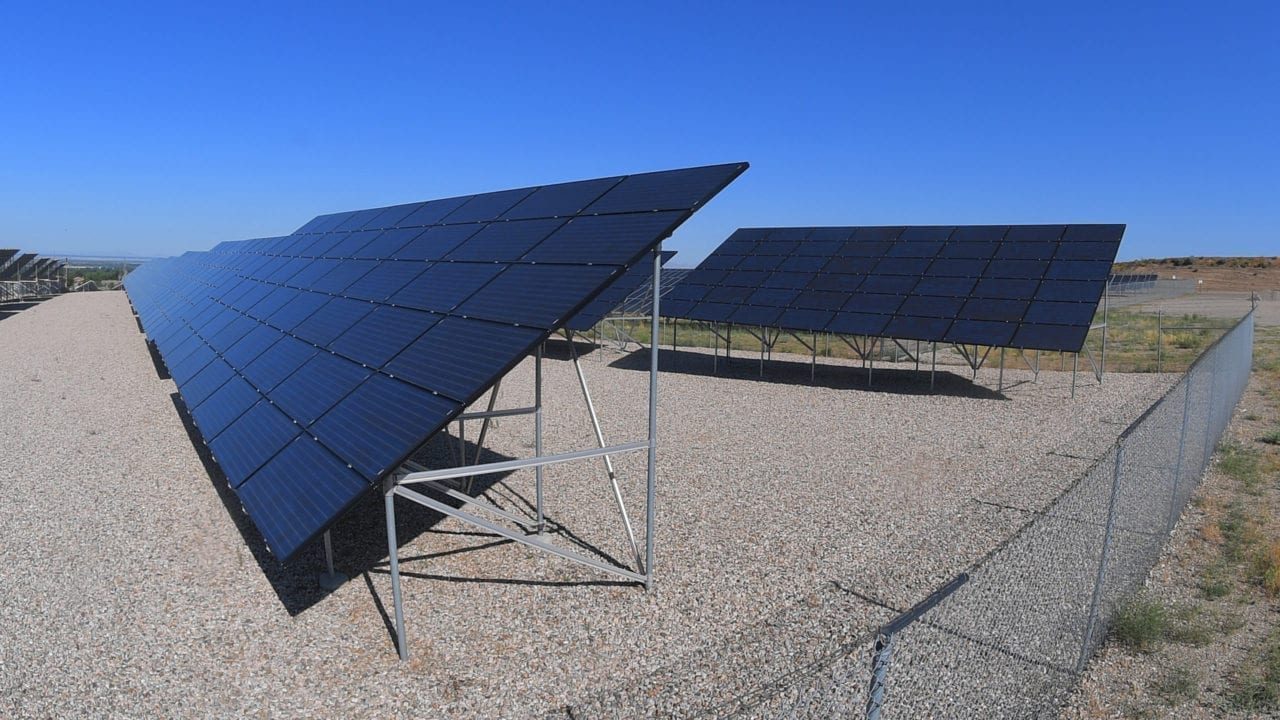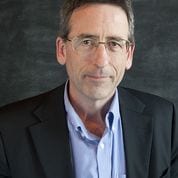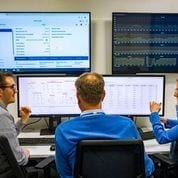The POWER Interview: Modernizing the Grid with DERs
The post The POWER Interview: Modernizing the Grid with DERs appeared first on POWER Magazine.

Energy industry experts have for years talked about the need to modernize the power grid. The focus can be on replacing and upgrading infrastructure, improving the efficiency of power delivery through digitization and smart grid technologies, or on the dispatch of renewable energy resources. Often, it's all of the above.
Industry analysts know that a more dynamic and flexible power grid is necessary, particularly as new power generation sources come online.
The grid is expanding, moving from simply supplying electricity to becoming an energy-service platform. Consumers of power may today be prosumers," often producing their own electricity. The new business strategy of power generation means acknowledging the impact of distributed energy resource (DER) systems on the grid.
 Pete Maltbaek
Pete MaltbaekSmarter Grid Solutions (SGS), headquartered in the UK, is a global enterprise software company that develops products to incorporate and manage DERs on the grid. The company manages DER assets for utilities and for the owners and operators of DER systems, those using SGS products to interface DERs to power networks and markets.
Pete Maltbaek, General Manager, North America for SGS, recently spoke with POWER about how the company has evolved, about the impact of DERs on the grid, and about how utilities are utilizing distributed energy resource management systems (DERMS).
POWER: How did Smarter Grid Solutions come into existence, and what was the initial issue for the power generation industry that SGS was created to address?
Maltbaek: Smarter Grid Solutions (SGS) has an interesting origin story." Back in 2008, several wind power developers wanted to develop wind farms in the remote north of Scotland. The grid in that location could not take the additional power that would be generated without tens of millions of dollars of grid upgrades, and this made the project uneconomic. The University of Strathclyde [in Glasgow] heard about this, and one of the company's founders, Bob Currie, who was working on his PhD at the time, came up with a solution with his supervisor, Graham Ault, also an SGS founder.
The solution was essentially software to monitor and control the interconnection point of the wind farms in a way that would allow most of the power to be transferred most of the time. The software was developed under the watchful eye of the utility protection engineers, and it worked. It also made the wind projects highly economic.
 Utility control rooms today are utilizing digitization to manage several different kinds of renewable, distributed energy resources. Courtesy: Smarter Grid Solutions
Utility control rooms today are utilizing digitization to manage several different kinds of renewable, distributed energy resources. Courtesy: Smarter Grid SolutionsToday this is called a managed interconnect," and the technology has been adopted by almost of all of the UK power network companies. It allows them to add many different kinds of renewable, distributed energy resources onto the grid on what would otherwise have been saturated (constrained) circuits requiring millions of dollars of upgrades, thereby making hundreds of projects economic that otherwise would not have been.
POWER: The SGS software platform, ANM Strata, is deployed by many utilities worldwide, including Con ED, Southern California Edison, and Avangrid in the U.S.; UK Power Networks and Western Power Distribution in the UK; and Hydro One in Canada. Can you talk about what a DERMS platform does, and how it is utilized by utilities?
Maltbaek: Following the development of the initial use case, which monitors the DER interconnection point and controls the amount of power being delivered to the grid, it was discovered that with this technology in place, many other grid and market use cases became possible. ANM Strata is a hierarchical control system that deploys to a utility control center, or can operate in the cloud, and interacts with existing utility control systems such as ADMS [advanced distribution management solutions] and SCADA [supervisory control and data acquisition], and data feeds such as load forecasts and weather, to manage, coordinate, and optimize DER operation both in front of and behind the meter. For some deployments, where close-to-real-time, sub-second autonomous response is required, a sub-product of ANM Strata called ANM Element is installed at the DER site either on local RTUs [remote terminal units] or at the substation. Together, ANM Strata and ANM Element provide value-creating, multi-functional DERMS capabilities for both grid and DER operators.
A key differentiating factor is that ANM Strata can operate like a full EMS [energy management system], in that it can use, but does not require, a full distribution network model-which typically does not exist or changes too quickly to be useful for control. The system uses a variety of network, DER, and market data that enables deployment to start inexpensively on a single feeder where there are many DERs, and which can then be followed by a staged rollout across the utility control area, adding functionality and scale only as required.
POWER: Your company began in the UK, and has since expanded its presence. What drove the company's expansion into the U.S. market?
Maltbaek: SGS started operations in the U.S. in New York about six years ago. At first, we were heavily involved in the Reforming the Energy Vision [REV]" work going on in New York-the desire to use local DER and DR [demand response] to avoid expensive substation upgrades. The timing was very fortunate for us, as we had differentiated technology that exactly addressed the use cases REV was considering. The profile of electric supply and consumption was also starting to change from the massively centralized, top-down one-direction flow approach to more distributed solar and wind. We then became heavily involved in DOE [Department of Energy] lab studies and trials at places like the National Renewable Energy Laboratory, and Lawrence Berkeley, and at early adopter utilities like Avangrid and in the labs at SCE [Southern California Edison], and business took off from there. It is always going to be slow going to try to convince utilities to use new technology (understandably, as they have to keep the lights on!) but we are seeing accelerating DERMS adoption now.
POWER: What are some of the problems that developers of renewable energy projects face today, and how does SGS provide solutions for those?
Maltbaek: A core use case is still the ability to provide a managed interconnect as an alternative to a developer of a midsize wind or solar farm having to pay for a wires" upgrade, which can take years and cost millions. If the potential power curtailment can be shown to be minimal, the technology offers a very cost-effective alternative that can be deployed very quickly. Then we have many other use cases such as battery optimization, microgrid control, power market participation and flexibility services"-these include traditional demand response, but today can encompass many other things such as price-based grid support. Finally, the ability to build and manage many of these into a coordinated whole system is another differentiator, since we give the developer or utility the ability to stack values" for additional economic benefit.
POWER: Can you talk about some of the specific projects and use cases where the SGS technology has been deployed?
Maltbaek: In the UK, we have large-scale deployments across the country, at almost all of the DNOs [distribution network operators], including the largest DERMS project ever created anywhere, with UK Power Networks. This system manages all of the DERs connected across the entire south-eastern part of the UK, including the city of London.
In the U.S., our projects range from our flexible interconnection work with Avangrid to a huge DOE-funded project with Southern California Edison to investigate the management of massive penetrations of solar onto their system, to the first multiple control-entity battery project in New York with Con Edison. In this project, batteries deployed around New York City obey- and make money from-scheduled NYISO market participation, while allowing overrides when needed by ConEd for local system support. We have completed a combined front-of-meter, behind-the-meter project with Tucson Electric Power, which looked at the home of the future," and its interaction with the utility. These homes will have a solar array, battery storage, all-electric heating and cooling, and an EV [electric vehicle] in the garage. In Canada, we are working on a new-concept, whole-town micro-grid project with Hydro Quebec, and a multi-use case project with Hydro One. We are also developing a very interesting system in Alaska, for a remote community, where the traditional expensive and polluting edge-of-town diesel generators will be largely replaced by a tidal or run-of-river combined hydro, solar, and battery storage system. It's a huge privilege to be working in this field-the possibilities are endless-and of course, it's all climate-friendly stuff!
POWER: How do you see the future of renewable energy adoption, both in the U.S. and Europe, and what barriers need to be overcome to meet all the national and regional mandates?
Maltbaek: In the UK and Europe, many of the traditional barriers have been removed and are now largely gone. The primary barriers here in the U.S. are three-fold. The first is the old business model wherein utilities make a return for their investors from the deployment of additional assets. This runs completely counter to the squeeze more out of what we have now" competitive world of most businesses. And it provides a disincentive to the adoption of more renewable energy onto existing circuits. This has to be fixed at the policy/regulatory level, and the PUCs [public utility commissions] are getting there, albeit slowly.
The second is the glacial slowness of utilities to adopt new technology. They necessarily take the approach that if it isn't broke, don't fix it-the old way has worked for a hundred years and the lights are on-so job done." This is hard to overcome, except where the financial advantages are obvious, which is so in our case-but then, refer to barrier one!
The final barrier is of course the competition between distributed clean, renewable (and free fuel) generation with the traditional energy sources: coal, oil, gas, and nuclear. I think most people are familiar with the arguments for one side or the other. Primarily, these are the intermittency problem and the maintenance of grid stability with renewables, and the carbon and safety issues with traditional resources. However, it seems to us that trying to stop the increase in renewables is like trying to stop the tide coming in. Renewables today compete without price subsidies and, with the right control systems in place, can out-perform polluting sources. The latest Michael Moore film, and the current COVID-19 situation notwithstanding, there is no doubt that they will become an ever-larger part of our energy mix. We consider ourselves fortunate to be able to contribute our technology to this.
-Darrell Proctor is associate editor for POWER (@DarrellProctor1, @POWERmagazine).
The post The POWER Interview: Modernizing the Grid with DERs appeared first on POWER Magazine.